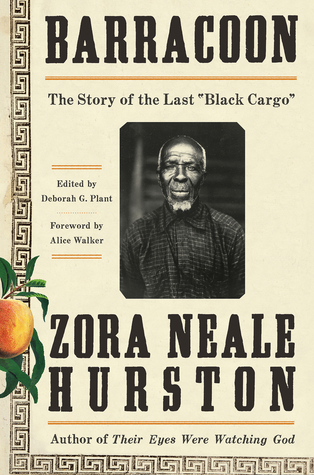More on this book
Community
Kindle Notes & Highlights
Read between
November 15 - November 19, 2021
Those who love us never leave us alone with our grief. At the moment they show us our wound, they reveal they have the medicine.
We see a man so lonely for Africa, so lonely for his family, we are struck with the realization that he is naming something we ourselves work hard to avoid: how lonely we are too in this still foreign land: lonely for our true culture, our people, our singular connection to a specific understanding of the Universe.
That though the heart is breaking, happiness can exist in a moment, also. And because the moment in which we live is all the time there really is, we can keep going.
Laws had been passed and treaties had been signed, but half a century later, the deportation of Africans out of Africa and into the Americas continued.
Hurston advised Kossola and his family “to avoid talking with other folklore collectors—white ones, no doubt—who he and Godmother felt ‘should be kept entirely away not only from the project in hand but from this entire movement for the rediscovery of our folk material.’”
Adopting the participant-observer stance is what allowed her to collect folklore “like a new broom.”
And sometimes her time with him is spent driving Kossola into town. Sometimes he is lost in his memories. Recording such moments within the body of the narrative not only structures the overall narrative flow of events but reveals the behavioral patterns of her informant.
He was particularly struck by a large square enclosure filled with thousands of snakes, which he was told had been collected for ceremonial purposes.
select a person, “one that the ‘superior wisdom and exalted taste’ of Foster designated the finest specimen.”6 Foster looked about him and chose a young man named Gumpa; “Foster making this selection with the intention of flattering the Prince, to whom Gumpa was nearly related.” This accounts for the one Dahoman in the cargo.
“My name is not Cudjo Lewis. It Kossula. When I gittee in Americky soil, Mr. Jim Meaher he try callee my name, but it too long, you unnerstand me, so I say, ‘Well, I yo’ property?’ He say, ‘Yeah.’ Den I say, ‘You callee me Cudjo. Dat do.’ But in Afficky soil my mama she name me Kossula.
“Nine year we hurtee inside ’bout our baby. Den we git hurtee again. Somebody call hisself a deputy sheriff kill de baby boy now. (Over)1 “He say he de law, but he doan come ’rest him. If my boy done something wrong, it his place come ’rest him lak a man.
When de spit goes from de mouf, it doan come back. When de earth eats, it doan give back.
Where narratives like those penned by Frederick Douglass speak to the cause of abolition, racial equality, and women’s rights, Barracoon does not articulate an explicit political agenda. And it does not speak with the kind of heroic, self-possessed, and self-realized voice associated with black autobiography.
And just as Kossola was ensnared in the institution of slavery in America, his son, Cudjo Lewis Jr., who was sentenced to five years of imprisonment for manslaughter, was handed over to the convict-leasing system in the state of Alabama.
Africatown was their statement about who they were, and it was a haven from white supremacy and the ostracism of black Americans. The bonds the Africans created in the barracoons, on the ships, and in servitude were the source of their survival and resilience, and the foundation of their community.
If we view Barracoon as just another brilliant example of Hurston’s anthropological genius, we are gravely mistaken and we do not fathom the full import of her objectives as a social scientist. In her endeavor to collect, preserve, and celebrate black folk genius, she was realizing her dream of presenting to the world “the greatest cultural wealth on the continent,” while simultaneously contradicting social Darwinism, scientific racism, and the American pseudoscience of eugenics.
Barracoon is a counternarrative that invites us to break our collective silence about slaves and slavery, about slaveholders and the American Dream.
American participation in trans-Atlantic trafficking can be traced to the colonial era. As the largest trafficking enterprises in the colonies at that time were run out of Rhode Island, the D’Wolf family, headed by James and Charles D’Wolf, ran the largest trafficking enterprise in Bristol, Rhode Island, after the American Revolution.


